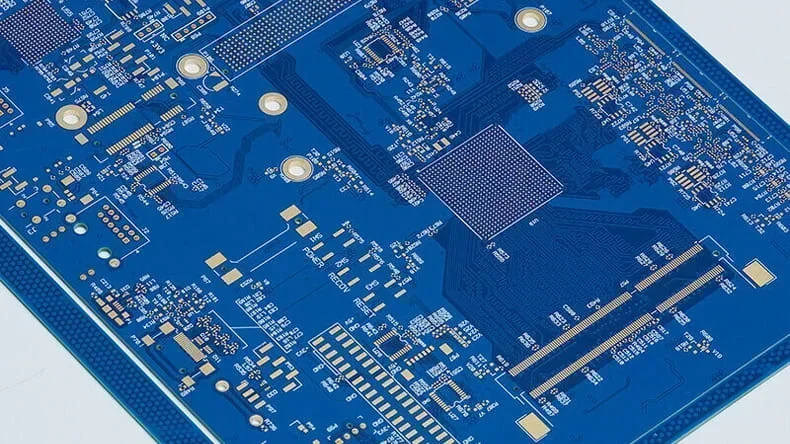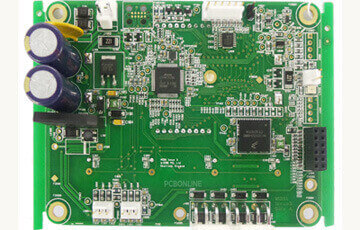
Military PCB assembly is the process of manufacturing and assembling printed circuit boards for military and defense equipment and devices.
For military equipment companies and institutes, military PCB assembly is a pivotal process, as a PCBA connects the circuitry and performs the electrical functions of the defense device.
However, finding a reliable military PCB assembly manufacturer can be difficult. Why?
Because military PCB assembly has high reliability and precision requirements, the PCBA manufacturer has to meet the military-level quality standard certification.
What's more, many countries have embargo requirements for military PCB assembly.
But no worries about the military PCB assembly.
This article gives an overview of military PCB assembly, including the military PCB assembly standards and requirements, and what requirements a military PCB assembly manufacturer should meet for your project.
Part 1. Overview of Military PCB Assembly
Military PCB assembly should have reliable and durable performance and can survive a long period in harsh environments.
To meet the rigorous acceptance standards, military PCB assembly should have below characteristics:
Long MTBF (mean time between failures): MTBF means the average time between the two latest repairable failures. The long MTBF of military electronics ensures high reliability.
Long lifespan: military systems such as tanks can survive more than a hundred years.
Military PCBs, components, and the PCB assembly process should ensure longevity.
Ruggedness: military PCB assembly work in harsh environments, such as vibrations, high temperatures, humidity, and salt sprays. It must withstand these conditions without failure.
High-performance: many military PCBs have high performance, such as HDI (high-density interconnection), and the military PCB assembly is a fine-pitch assembly.
To extend the PCBA lifespan and increase ruggedness, you can add the conformal coating to the military PCB assembly in post-assembly.
Part 2. What are the Military PCB Assembly Standards
Every country has its military PCB assembly standards.
Before you start the research and development of a defense product project, ask yourself—
What standards should the military PCB assembly follow?
Compliance with military standards (MIL-STD) or similar is often required.
The widely recognized international standards for military PCB assembly include:
MIL-STD-810G: It is a US military standard for environmental test methods and engineering guidelines for military equipment.
MIL-PRF-38535: It is a general specification for microcircuits used in military and aerospace applications.
MIL-STD-454: It is a standard general requirement for military electronic equipment.
In addition to international standards, there are country-specific standards for military PCB assembly.
We have sorted out the military PCB assembly standards of some countries.
The United StatesMIL-PRF-31032: It is a certification based on a performance specification for military printed circuit boards/printed wiring boards.
IPC-A-600: It is a set of acceptability criteria for printed circuit boards.
IPC-A-610: It is a set of acceptability criteria for PCB assembly/electronic assembly.
FranceDEF STAN (French Defense Standards): It is a set of defense standards that cover various aspects of defense equipment, including military PCB assembly for the French armed forces.
GermanyVG Standards (German Defense Standards): It is a set of standards covering a wide range of topics, including electronics, materials, and quality assurance for defense and security-related products.
CanadaControlled Goods Program (CGP): It ensures that the controlled goods, including military PCB assemblies, are safeguarded by authorized individuals.
ChinaGB Standards (National Standards of China): standards covering various industries, including military PCB assembly.
GJB 7001: a technical specification for aerospace and military microelectronics technology.
GJB 1191A-2003: It is a general specification for military electronic assembly technology.
GJB 901B-2009: It is a quality management standard for defense contractors.
GJB 5226A-2002: a quality assurance standard for military PCB assembly manufacturers.
JapanJIS C 5081: a standard for printed wiring boards, including military PWB.
GJB Standards (Japanese Defense Standards): standards covering aspects of defense technology, including military PCB assembly.
GJB 3007A: manufacturing and quality assurance standards for military PCB assembly/electronic assembly.
RussiaGOST R ISO 10373-3 - Part 3: it is a standard of test methods for cards with contacts (PCB and PCB assembly).
GOST R (Russian Defense Standards): standards for military technology, including military PCB assembly.
GOST R54525: a standard for soldering components on military PCB (military PCB assembly).
BrazilINMETRO Ordinance No. 350 specifies requirements for electrical equipment, including military PCB assembly.
Besides the above-mentioned countries, the rest countries also have their own standards for military PCB assembly.
We recommend consulting with the military and electronics associations in the specific country for the current military PCB standards.
Part 3. Requirements for Military PCB Assembly

Military PCB assembly has strict requirements in the PCB laminates/materials, components, and design for high performance, reliability, and durability.
Depending on the applications, the laminates for military PCBs include Rogers, high-Tg FR4, ceramics, copper, PI, and hybrid materials, such as Rogers/FR4/copper.
The requirements of military PCB laminates are:
Small and consistent thermal expansion
Military systems work in deserts, mountains, and other outdoor environments all day long.
So the PCB assembly should be able to withstand large temperature fluctuations.
For this reason, military PCB materials are expected to have a low and consistent CTE (coefficient of thermal expansion).
Otherwise, serious issues may happen, like deforming, warping, etc.
Small and stable Dk (dielectric constant) and Df (dielectric loss
All military systems should maintain signal integrity, especially high-frequency applications, such as radars.
The laminates of military PCBs are expected to have stable and small Dk and Df for consistent signal transmission and little signal loss.
That's why PTFE/Rogers and ceramic-based laminates are preferred materials for military PCBs.
Low moisture absorption
The laminates of military PCB should have low moisture absorption in case of corruption and changes in dielectric characteristics in humid environments.
The laminates of military PCB assembly should be military-level, and so are the electronic components mounted on the PCB.
Requirements of military components are:
High reliability
The electronic components used in military and aerospace are of the highest level of reliability.
Because the environments of military and aerospace electronics are the harshest, the components should have a rugged package and longevity in aggressive environments.
Withstand large temperature changes
The military-level components should be able to operate across a large temperature range, from cold to high heat.
The temperature range of military components is -55℃ to 150℃.
Fine-pitch components
The military components may have a compact space to place and operate in.
And these components can be BGA (ball-grid array), FBGA (fine-pitch ball grid arrays), etc.
Accordingly, the military PCB assembly should be fine-pitch.
From the PCB assembly manufacturer PCBONLINE, our PCB assembly can have the finest pitch of 0.05mm.

Speaking of the PCB design for military PCB assembly, there are a lot of considerations, including:
EMI/EMC
The PCB design should have no EMI (electromagnetic interference) to other nearby equipment.
Signal integrity and EMC (electromagnetic compatibility) should be considered in military PCB design.
To achieve signal integrity, in EMC PCB design, crosstalk and coupling are not expected to happen.
The lines should be carefully routed to prevent crosstalk.
And the measures include limiting the signal line length, avoiding sharp corners, keeping high-speed signal lines away from low-speed lines, etc.
Redundancy
The critical parts of military PCB assembly are designed to have redundancy. This is to ensure that, in the event of some section failures, the system can still work.
To sum up, the military PCB assembly has the highest level in all aspects. Technology, reliability, longevity, and precision are the best in various industries.
Part 4. Military PCB Assembly Applications
The applications of military PCB assembly cover all electronic devices in the defense field, including missiles, aircraft, tanks, radars, and so on.
According to different systems, military PCB assembly applications can be the below.
Rugged computers
Radar and surveillance systems
Military robotic systems
Command and control systems
Navigation and systems
Electronic warfare systems
Aerospace and aviation systems
Military medical equipment
Driving and submarine systems
Part 5. What is a Military PCB Assembly Manufacturer Like?
Military PCB assembly is of high cost. So it's important to work with a manufacturer providing high-quality and affordable PCB assembly.

You can work with a one-stop PCB assembly manufacturer with its own factories, providing independent manufacturing. We have two advanced PCB manufacturing bases and one PCB assembly factory equipped with the most cutting-edge equipment.
Over the past 24 years, PCBONLINE has provided one-stop PCB assembly for all industries, including aerospace, aviation, medical, automotive, communication, computer, industrial, and consumer electronics.
The PCB and PCBA at PCBONLINE are certified with ISO 9001:2015, IATF 16949, IPC-600, IPC-610 2/3, RoHS, REACH, and UL.
PCBONLINE can fabricate and assemble aerospace-grade and medical-grade printed circuit boards from prototypes to bulk production.
PCBONLINE can use automotive-grade Rogers PCB laminates for one-stop medical PCB fabrication and assembly.
All components of any quantity can be sourced according to your BOM (bill of materials), including aerospace-grade components and weird parts.
PCBONLINE can manufacture and assemble automotive and aerospace PCBs of any type, including high-frequency, ceramic, HDI, rigid-flex, flexible, high-TG FR4, and MCPCB.
Our advanced PCB assembly experiences are rich.
We used to fabricate rocket-used PCB for an Israeli company and Rogers/FR4/copper hybrid-substrate PCB for a German company.
If you want high-end PCB assembly from PCBONLINE, you can contact info@pcbonline.com. We will make sure that you and we commit to the legal requirements and that the PCB assembly can meet your demands.
Conclusion
Military PCB assembly is high-performance electronic manufacturing for defense applications. It requires high reliability, ruggedness, precision, and longevity. Military PCB assembly has rigorous demands on the PCB, components, and design. PCBONLINE provides PCB assembly of high quality at competitive prices. If you have an interest in cooperation with PCBONLINE for advanced PCB assembly, contact us by email or chat online from the window on the right.
PCB Assembly from PCBONLINE.pdf








